



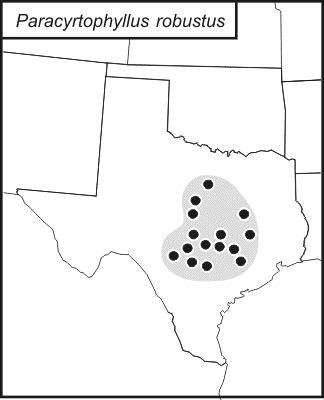
|
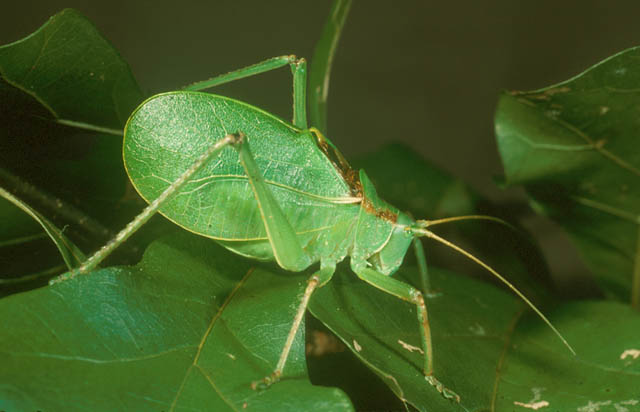
|
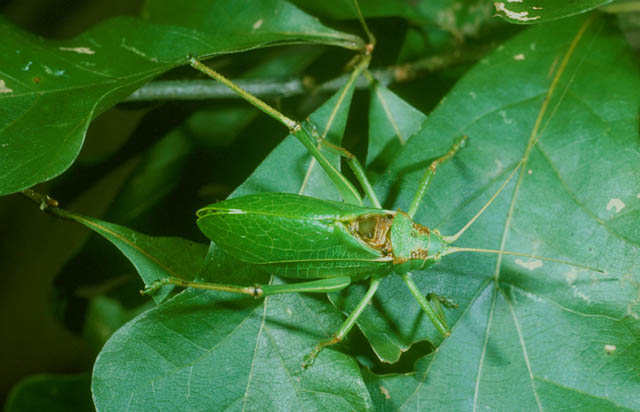
|
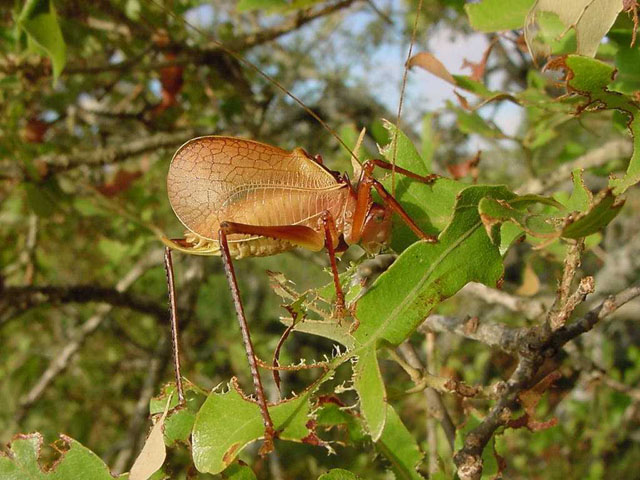
|
| map | green male | green male | pink male |
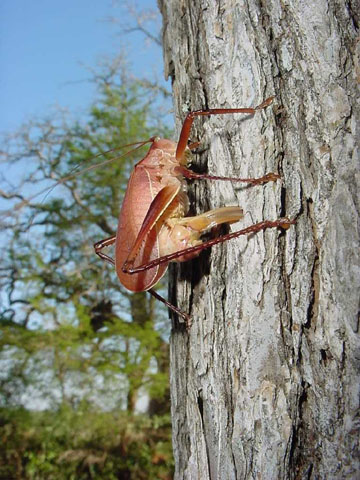
|
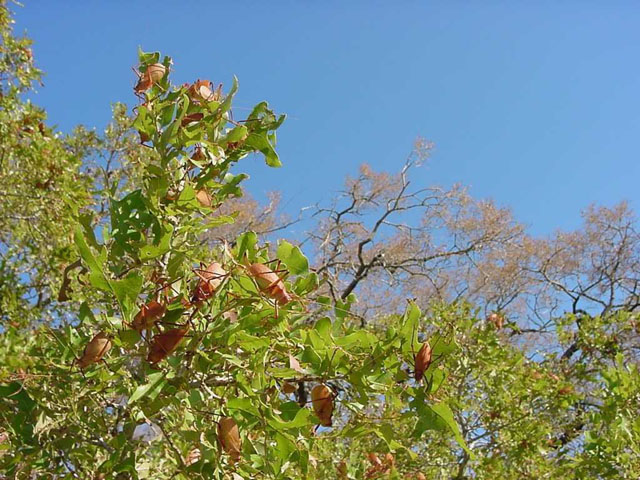
|
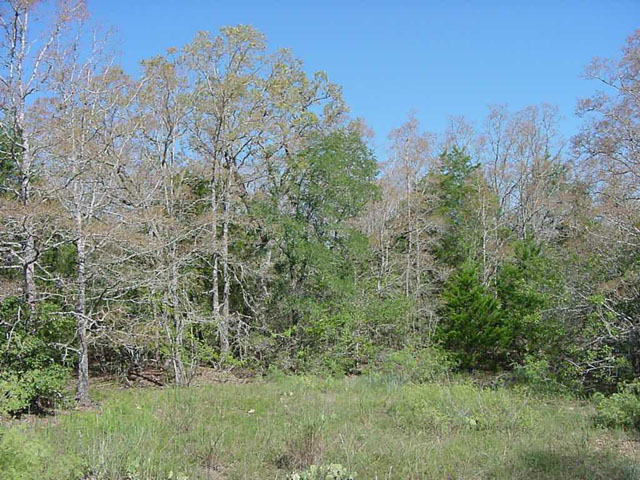
|
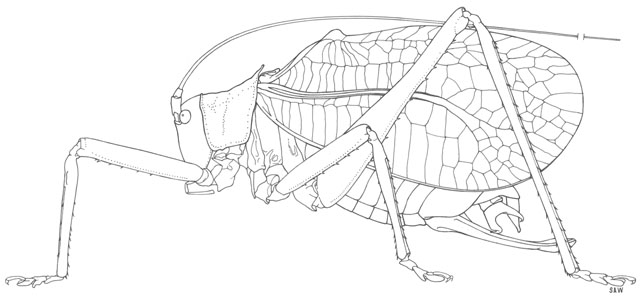
|
| pink female | outbreak | defoliated post oaks | male |
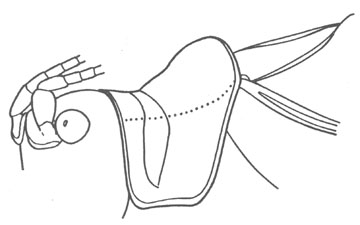
|
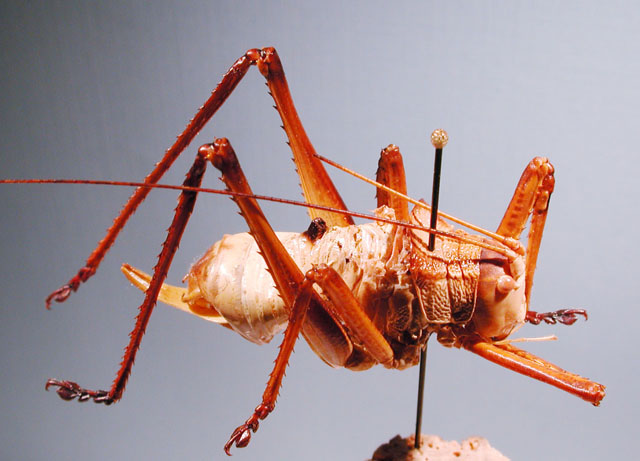
|
||
| pronotum | tubercle |

| Song at 25°C: | A many-pulsed raucous chirp lasting about one-third second repeated at ca 2 s intervals. Pulses come too fast to count. |
| Identification: | Length 33-42 mm. Forewings are broad near the tips and short; males have a large stout erect knob on the third abdominal tergite. |
| Habitat: | Oak woodland. |
| Season: | June to September. |
| Remarks: |
North American pseudophylline katydids are often numerous, as evidenced by their nighttime choruses; however, specimens are not easy to collect and they do not defoliate the trees they live in. An outbreak of P. robustus in 2001 in Lee County, Texas, is an exception to these last two generalizations. John Oswald, of Texas A&M University, contributed this description:
After receiving a report of patches of trees being defoliated by grasshoppers along Texas highway 21 between Lincoln and Old Dime Box, Texas, Ed Riley and I went to take a look at the site and to get some specimens for the Texas A&M University Insect Collection. We observed several areas of almost totally defoliated post oak trees (Quercus stellata) in localized patches of up to tens of acres. Many of the trees were stripped entirely bare of leaves. The defoliator turned out to be Paracyrtophyllus robustus. When we visited the site on 14 July 2001 the population was in decline and the ground under areas of defoliated canopy was littered with the dead bodies of thousands of individuals. We spoke with one rancher whose property contained some defoliated forest. He said that the numbers were much higher several weeks ago. The blow-up must have started considerably earlier, perhaps in May or June. The rancher, who had been living in the same house for 30 years, said that he had never noticed the species before, and had certainly never had such an outbreak before on his property. Interestingly, the species appeared to be feeding almost exclusively on the post oaks. There were also many elms (Ulmus alata and/or U. crassifolia) mixed in the forest, but they were still green with leaves. There were still quite a few living specimens hanging around (with apparently a larger percentage of females, many of the males having already died) and we collected approximately 100 specimens for the collection, but could have collected hundreds more with little difficulty. All specimens observed were reddish-brown. In northern Mexico a related pseudophylline, Pterophylla beltrani, is a major forest pest (Hollander and Barrientos 1994). Isolated individuals are always green, whereas outbreak individuals are always pink (Barrientos and Hollander 1994). |
| More information: |
Subfamily Pseudophyllinae, genus Paracyrtophyllus. |
| References: | Hebard 1941. |
| Nomenclature: | OSF (Orthoptera Species File Online). |

|

|